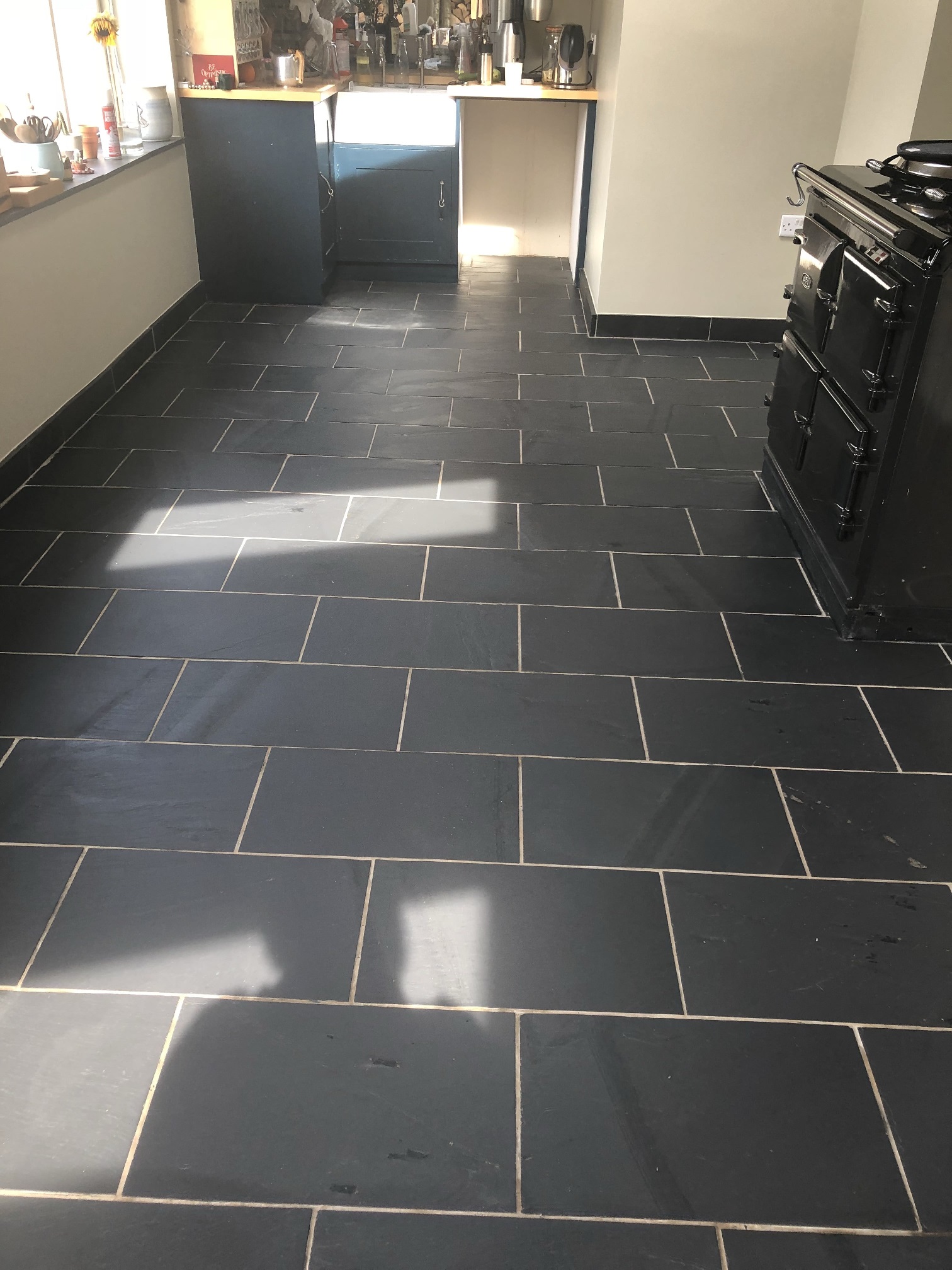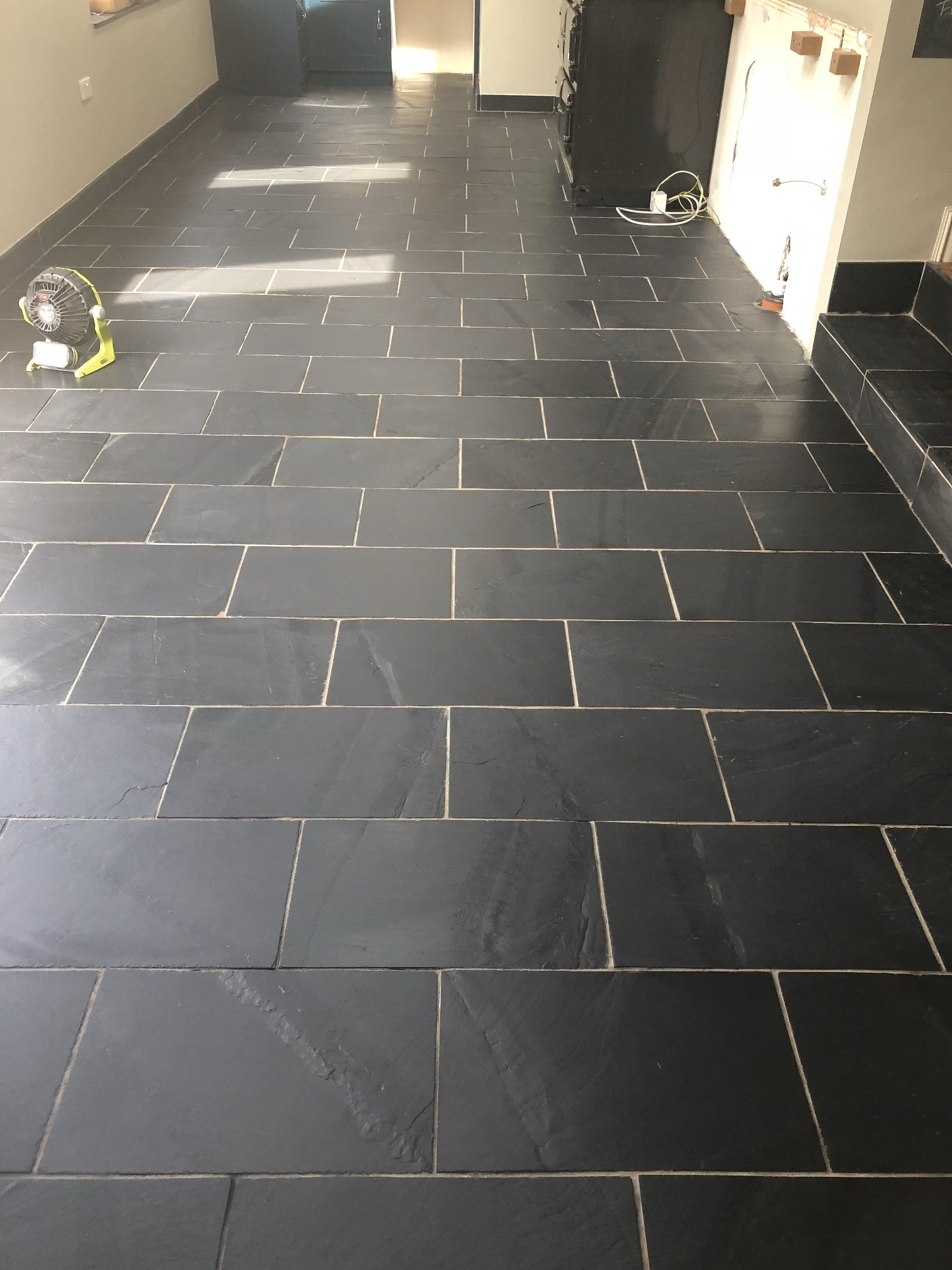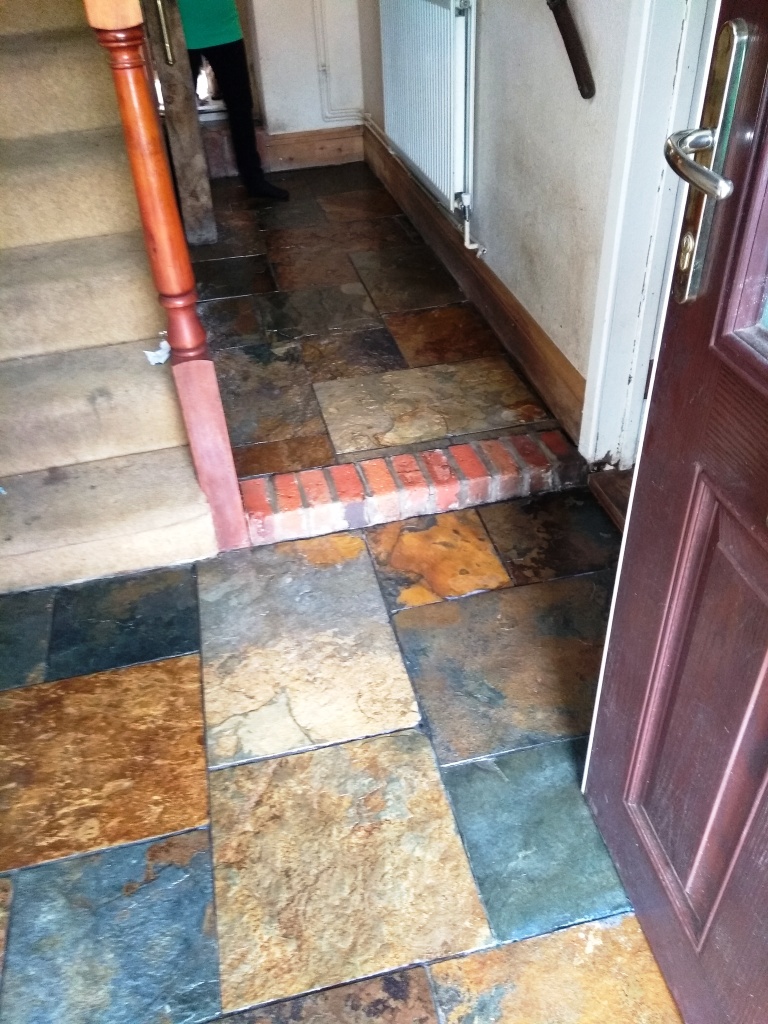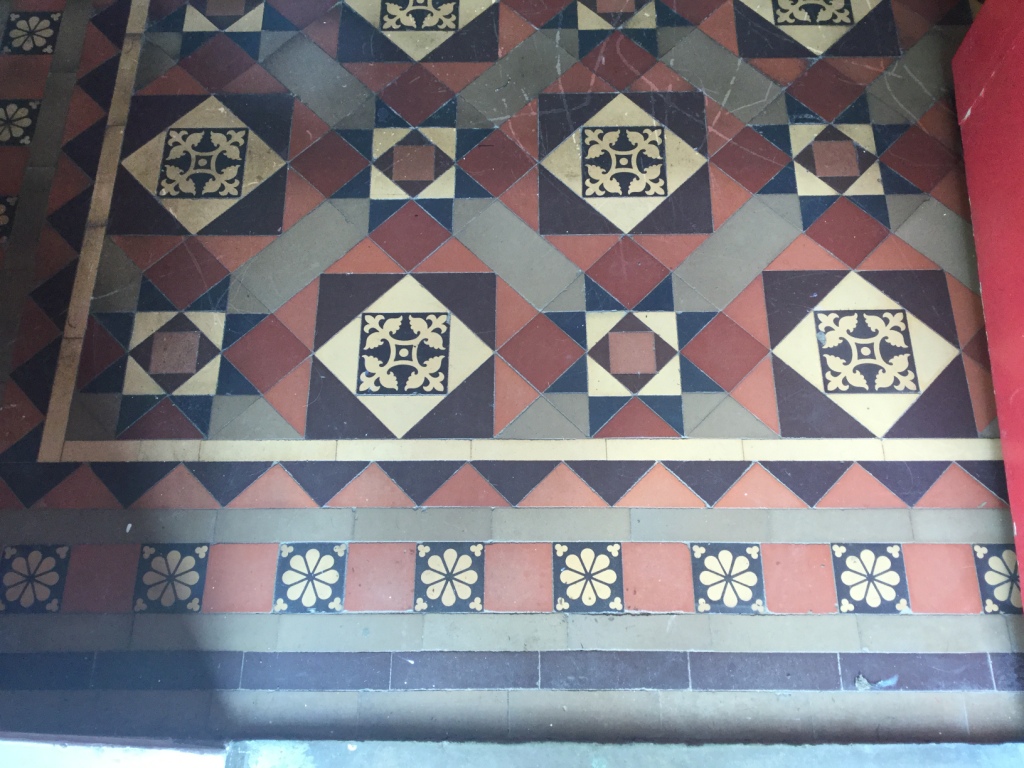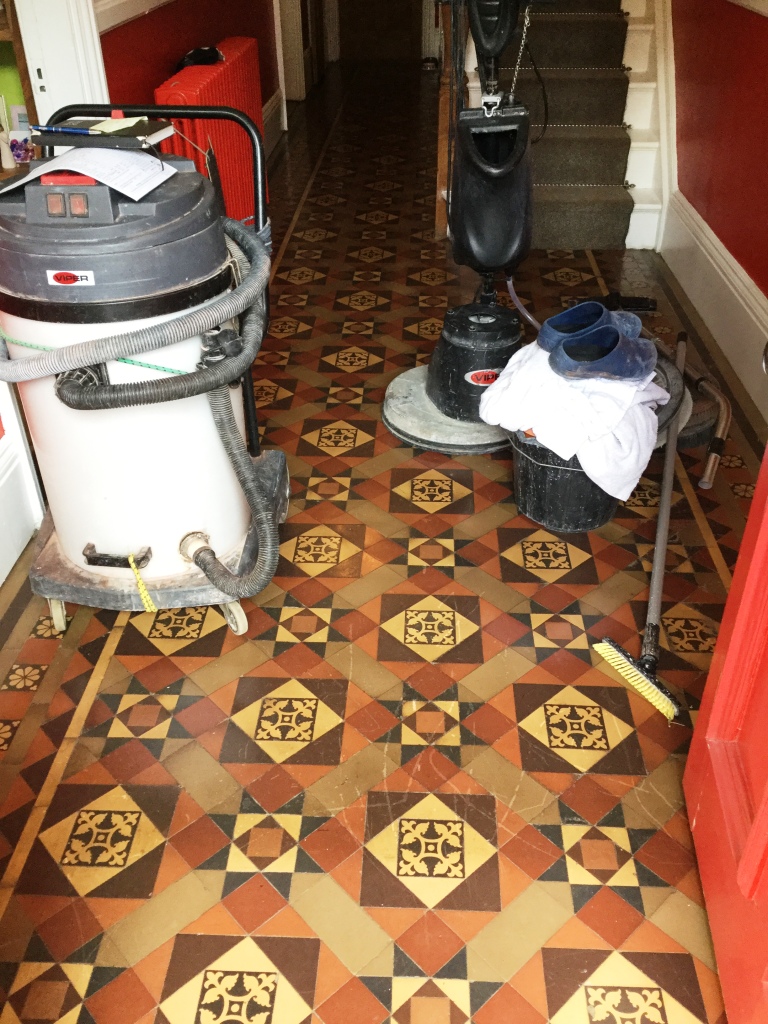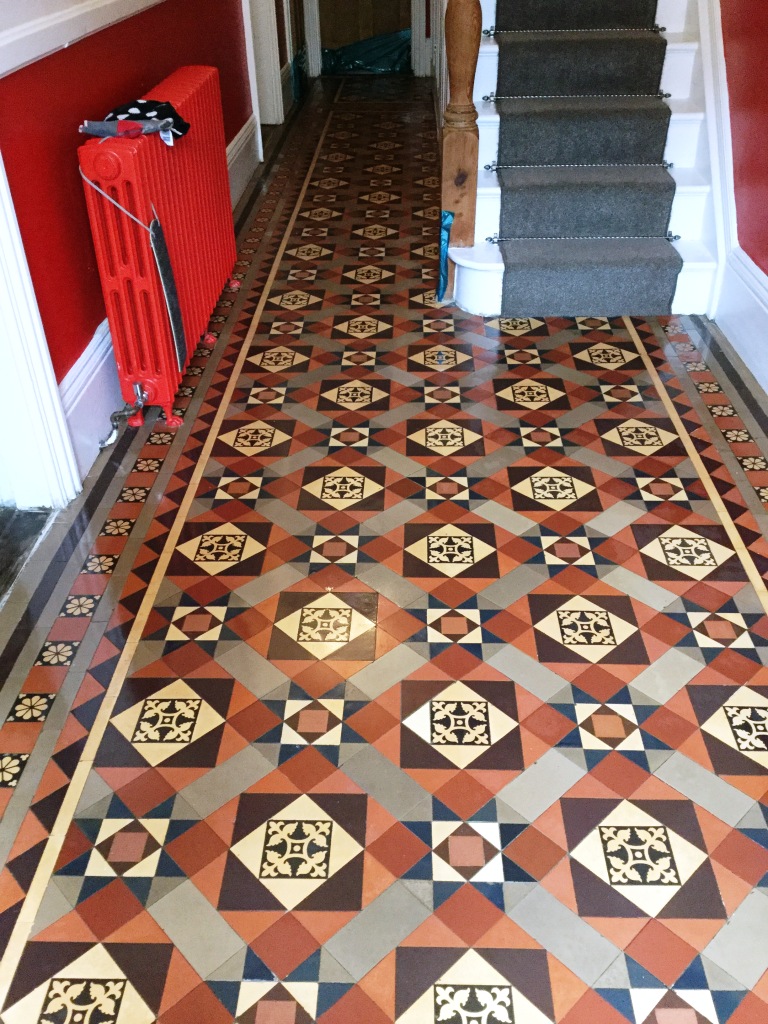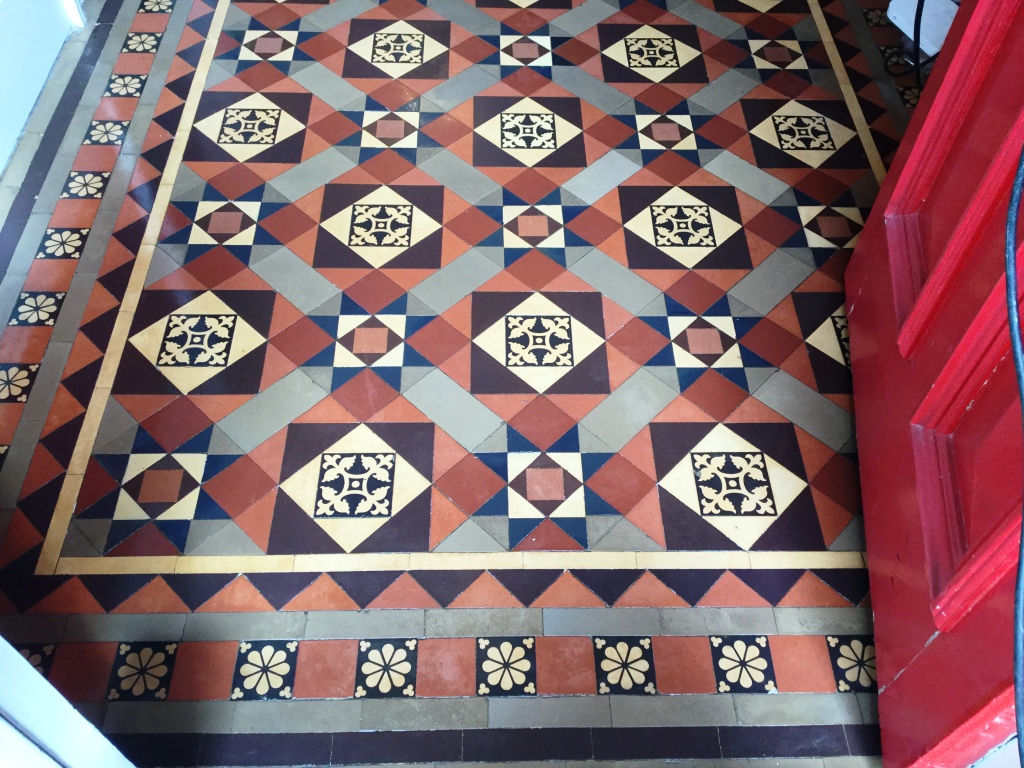On visiting the property at this popular commuter town within the St Albans district, it was clear the floor was looking a little neglected and in need of some care and attention. They were keen to retain this feature of their Edwardian property. We discussed what could be done to restore the floor and the client was given a quote and a timescale for the work. They were happy to go ahead.
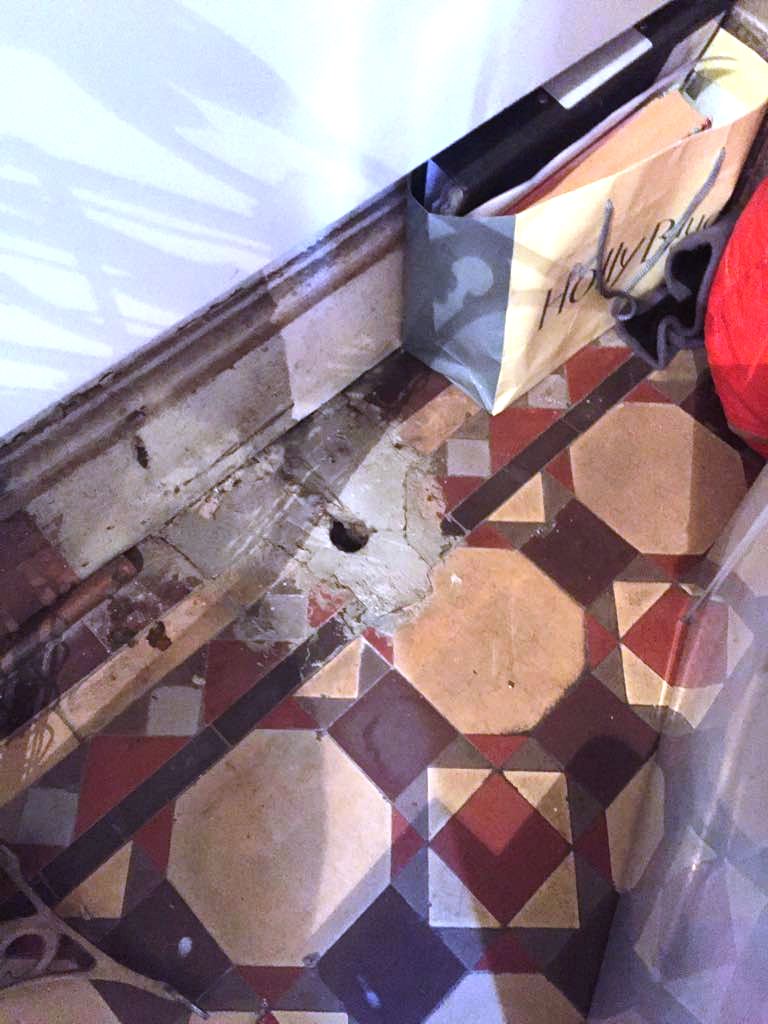 |
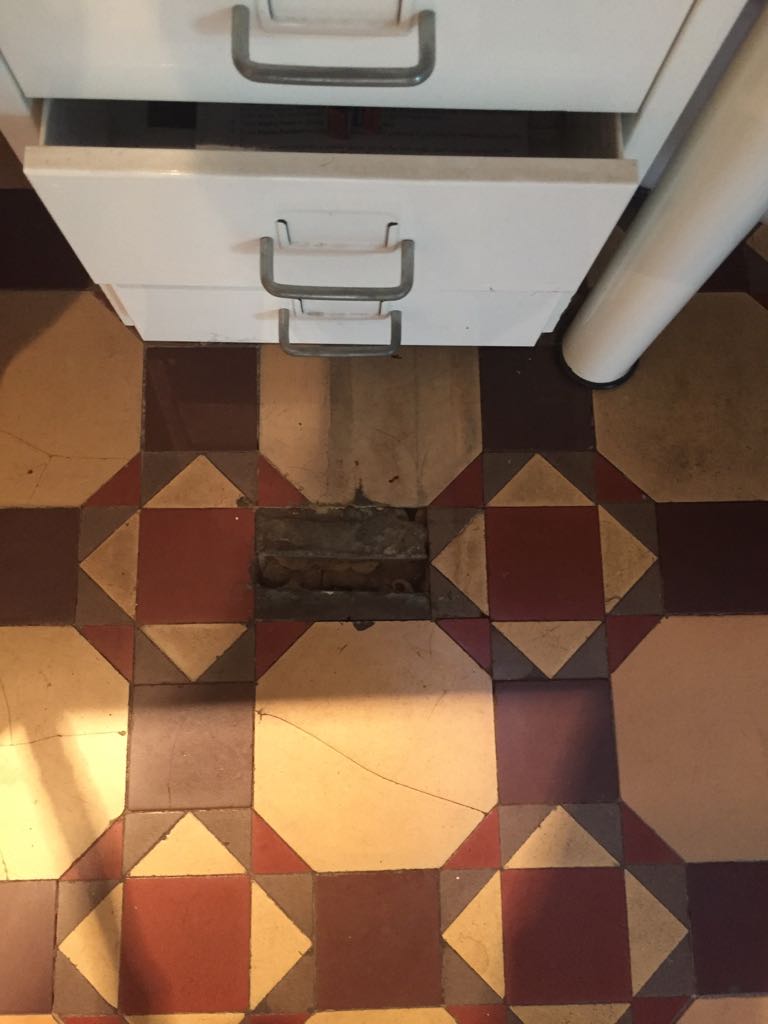 |
Cleaning and Repairing an Edwardian Tiled Hallway Floor
The first step was to give the floor a deep clean with a strong dilution of Tile Doctor Pro-Clean. This product is designed for use on Tile, Stone and Grout and when used in a strong dilution can strip away any old sealers without harming the tile itself. The product is left to dwell on the tiles for short time and then scrubbed in using a rotary brush. We then rinsed with water to remove the slurry produced and using a wet vacuum we removed the residue.Once this was finished and with the floor looking cleaner the next step was to tackle the cracks in a few of the tiles under the stairs. This is when we discovered that the floor had become loose. When removing some of the broken tiles adjacent to the skirting we discovered a whole section of floor, about 1/3 of sqm had become loose and dropped slightly.
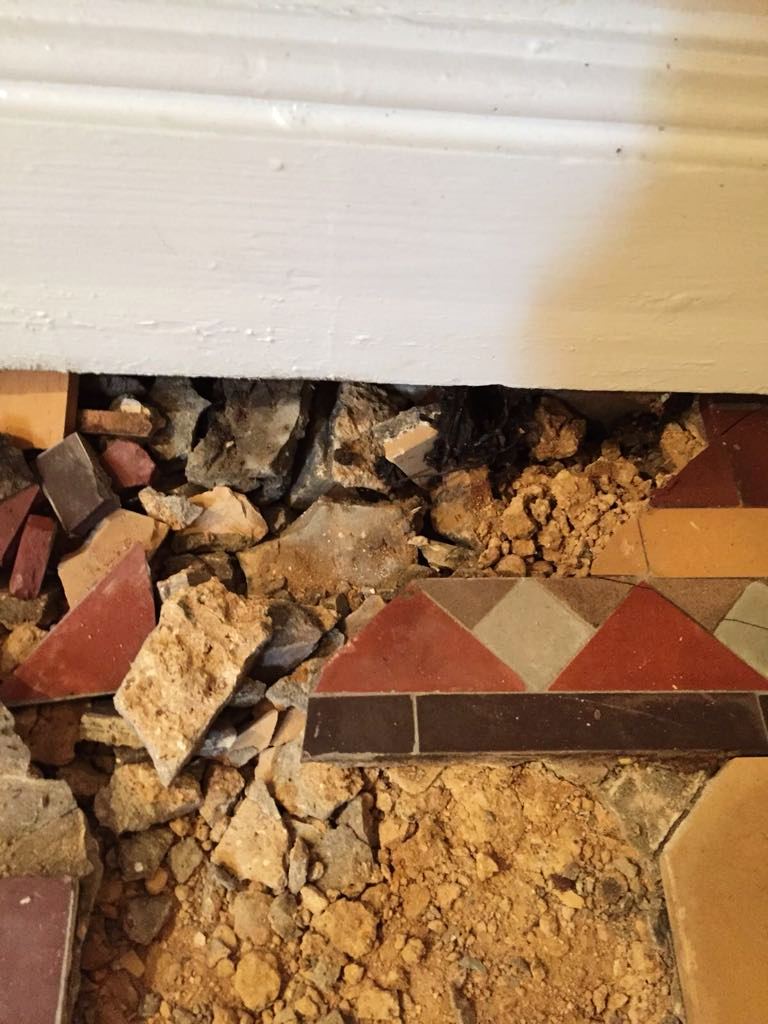 |
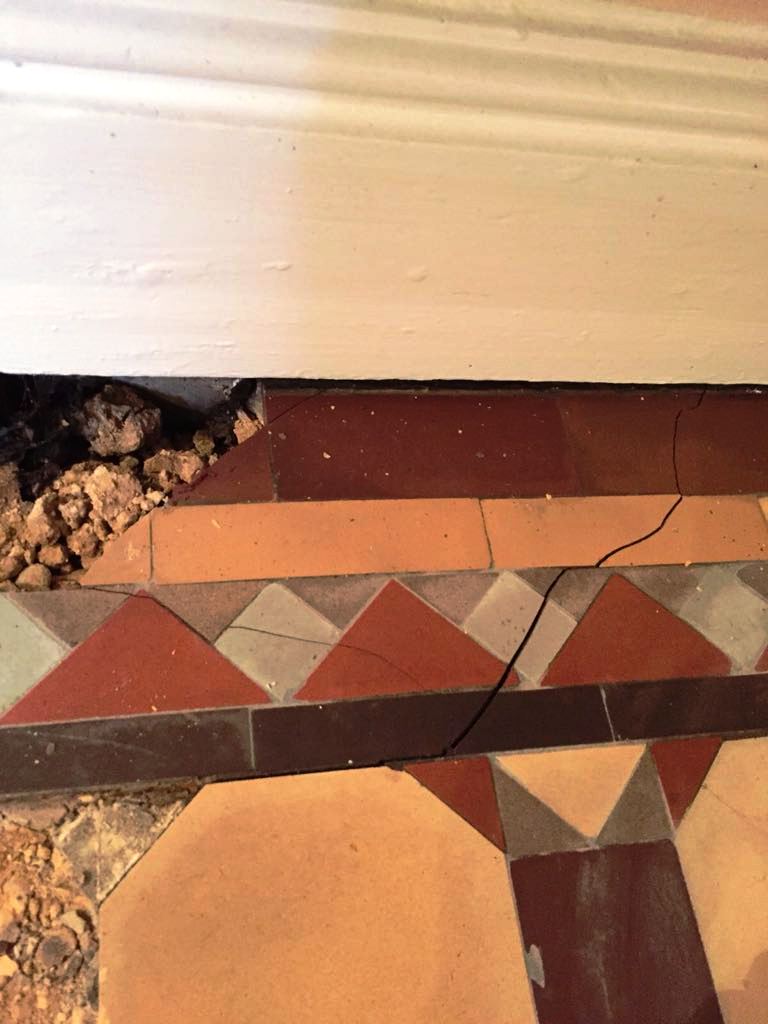 |
The client was concerned with this setback and wasn’t sure what we would be able to do. However, the need not have worried, we have come across this situation before! To tackle the problem, we carefully excavated the area and re built the sub floor below the tiles in concrete. We then levelled the floor in preparation for tiling. Luckily, we were able to salvage the existing tiles and they were individually cleaned using a diamond wet cutter before being re-laid into the original pattern.
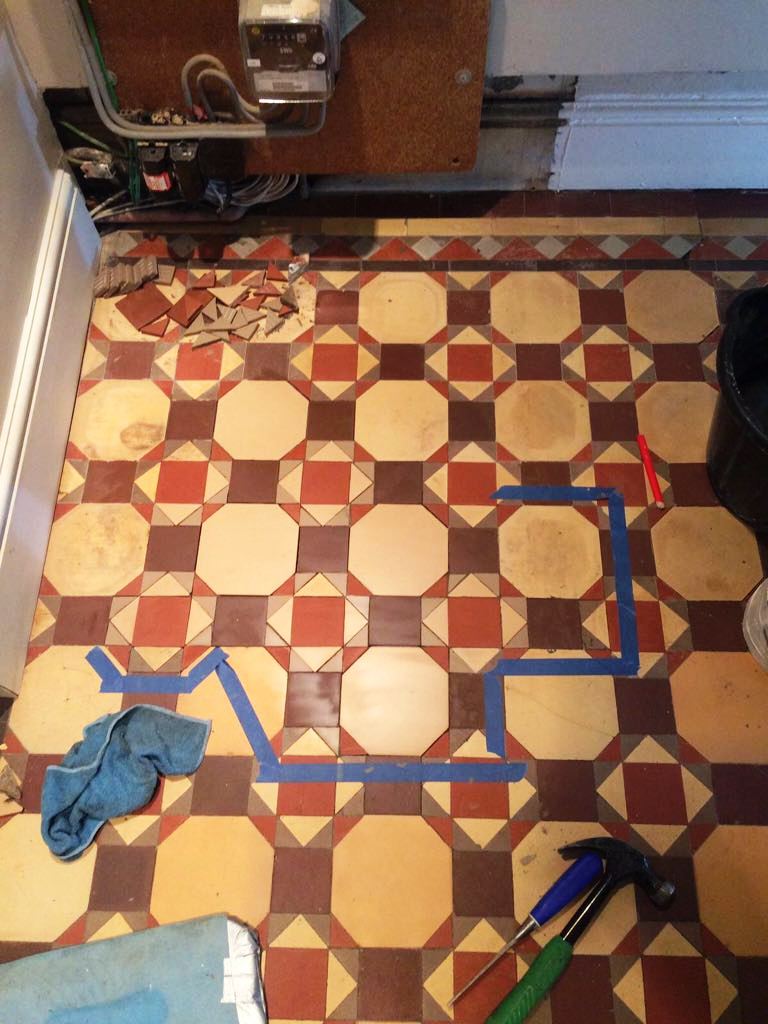
Sealing an Edwardian Tiled Hallway Floor
With the original tiles laid back down clean and the flooring rebuilt under the stairs we re-grouted the floor before we were ready to apply a protective sealer. Before doing that however the floor needed to be dry, so we left it to dry off fully overnight.Returning the following morning, we checked with a moisture meter that the floor was dry, which it was. Firstly, we applied a primer seal using Tile Doctor Colour Grow which is an impregnating sealer to protect the tiles and enhance their colour. Once the first coat of sealer was dry it was followed by five coats of Tile Doctor Seal & Go which adds further protection and leaves a glorious sheen.
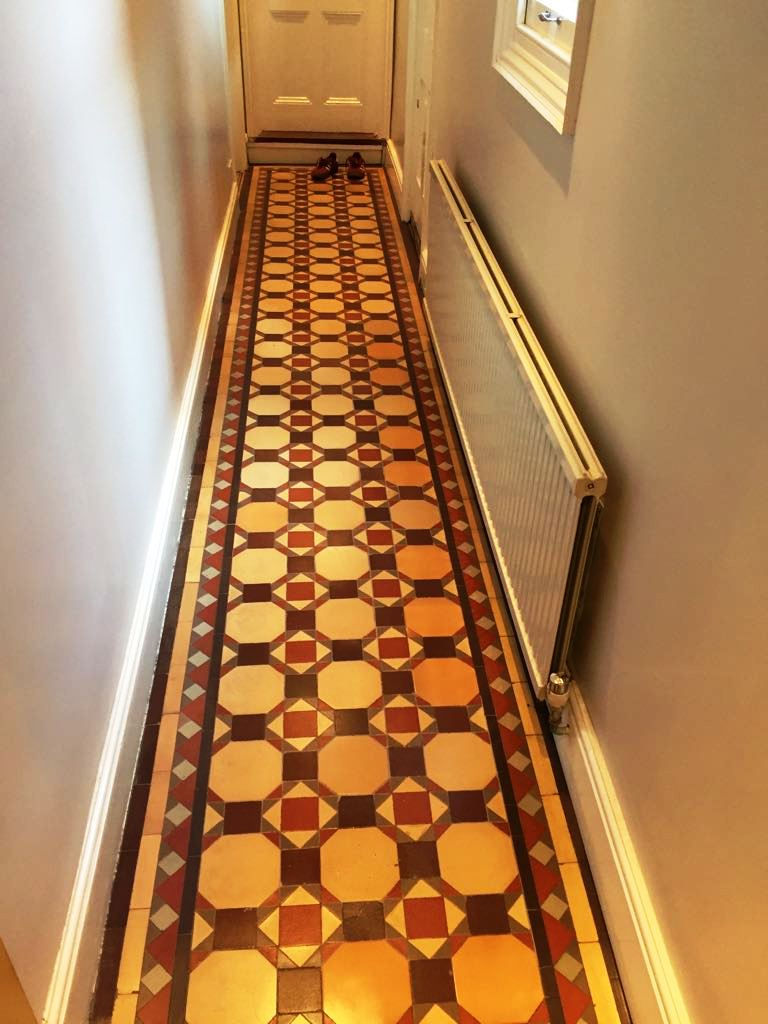 |
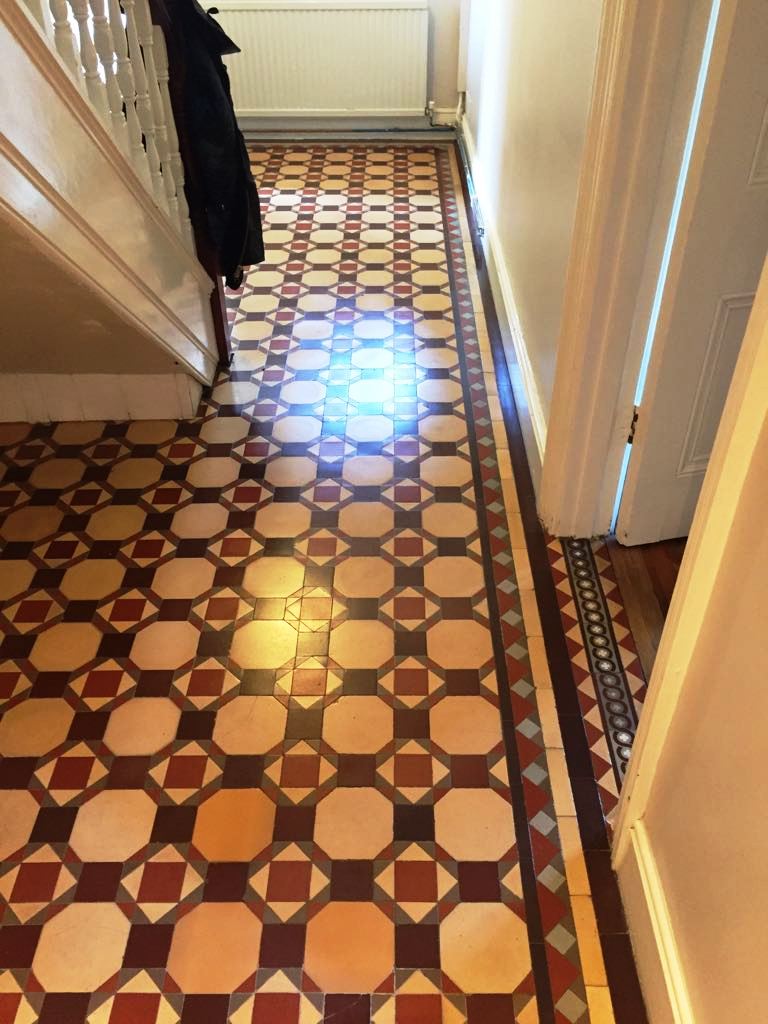 |
The floor looks amazing and the client was over the moon with the end result. It far exceeded their expectations particularly after finding an area of the floor had collapsed.
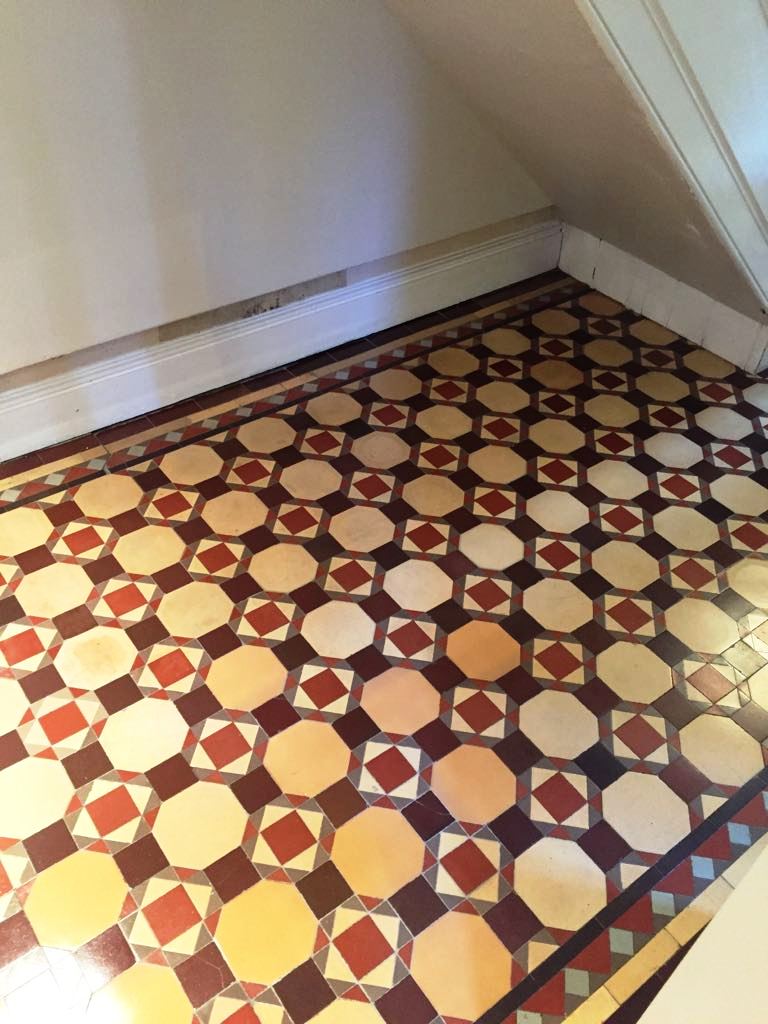
Source: Edwardian Tiled Floor Restoration in Hertfordshire



